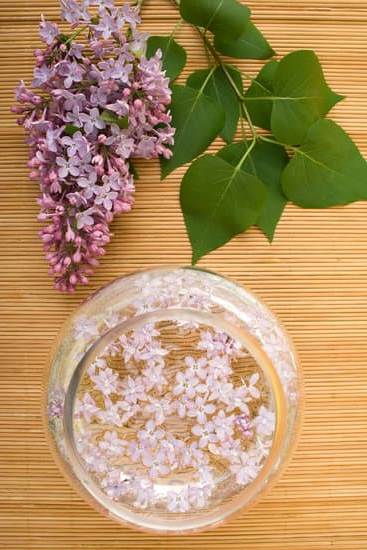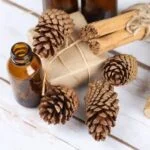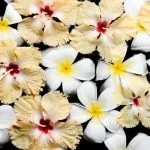Pulse points in aromatherapy play a vital role in enhancing the benefits of essential oils on our overall well-being. These key areas on the body where blood vessels are closest to the skin help maximize the absorption of essential oils, allowing their therapeutic properties to take effect more efficiently. Aromatherapy has been widely recognized for its healing properties and has been used for centuries across various cultures to promote health and wellness.
Understanding pulse points is crucial in harnessing the full potential of aromatherapy. By identifying these specific areas on the body – such as the wrists, temples, neck, and behind the ears – practitioners can target them with essential oils strategically chosen for their unique benefits. The application of essential oils on pulse points allows for direct absorption into the bloodstream, leading to a quicker response from the body’s systems.
By exploring the benefits of applying aromatherapy to pulse points, individuals can experience a range of mental, physical, and emotional advantages. From reducing stress and anxiety to improving focus and relaxation, utilizing essential oils on pulse points can have a significant impact on one’s overall well-being.
In this article, we will delve deeper into how different essential oils can be used effectively on pulse points and provide a step-by-step guide on achieving maximum benefits through this practice.
History of Aromatherapy
Aromatherapy, the practice of using essential oils for therapeutic purposes, has a long and rich history dating back centuries. The use of aromatic plants and oils for healing and well-being can be traced back to ancient civilizations such as the Egyptians, Greeks, Romans, and Chinese. These cultures believed in the powerful effects of certain scents on both the body and the mind.
Throughout history, aromatherapy has been used for a wide range of purposes, including relaxation, stress relief, pain management, improved sleep quality, and even spiritual practices. The ancients used plant extracts in various forms such as ointments, incense, perfumes, and baths to promote health and overall well-being. The knowledge of these natural remedies has been passed down through generations and continues to be valued in modern times.
Many traditional healing systems like Ayurveda and Traditional Chinese Medicine incorporate aromatherapy into their treatments to support balance and harmony within the body. In recent years, there has been a resurgence in the popularity of aromatherapy as more people seek natural alternatives to conventional medicine. By understanding the historical context of aromatherapy, we can better appreciate its profound impact on our health and well-being today.
- Aromatherapy dates back centuries to civilizations like ancient Egypt where essential oils were used in religious ceremonies.
- The Greeks were known for their use of aromatic plants for medicinal purposes.
- In Rome, fragrant oils were often applied during massages or added to baths for their therapeutic benefits.
Understanding Pulse Points
Pulse points play a crucial role in aromatherapy as they are areas on the body where the pulse can be easily felt. These points are believed to have a higher temperature than other parts of the body, making them ideal for the absorption and dispersion of essential oils. By understanding the key pulse points on the body, individuals can effectively harness the benefits of aromatherapy and promote overall well-being.
To effectively utilize aromatherapy on pulse points, it is essential to identify these key areas on the body. Some common pulse points include the wrists, temples, neck, behind the ears, and inner elbows.
These areas have been traditionally used in various healing practices due to their connection to vital organs and energy channels in the body. Applying essential oils to these pulse points allows for quick absorption into the bloodstream, leading to a more immediate effect on both physical and emotional health.
One of the significant advantages of using pulse point aromatherapy is its convenience and versatility. Whether you are at home, work, or traveling, you can easily tap into the benefits of essential oils by applying them to your pulse points throughout the day.
This practice not only enhances your mood and mental clarity but also supports your overall health and wellness. By incorporating aromatherapy into your daily routine through pulse point application, you can experience the holistic benefits of this natural healing method firsthand.
- Wrist: Apply essential oils here for easy access throughout the day.
- Temples: Gently massage essential oils onto this area to relieve headaches or promote relaxation.
- Neck: Rub essential oils here for stress relief or tension release.
- Behind Ears: Apply essential oils here for a calming effect on emotions.
- Inner Elbows: Utilize this area for boosting energy or promoting better sleep.
Benefits of Aromatherapy on Pulse Points
Aromatherapy has been a popular holistic healing practice for centuries, known for its ability to promote relaxation, reduce stress, and improve overall well-being. When it comes to aromatherapy, understanding the concept of pulse points is crucial in order to maximize the benefits of essential oils.
Pulse points are specific areas on the body where you can feel your pulse most strongly, such as the wrists, temples, neck, and behind the ears. These points are believed to be highly effective for absorbing and releasing the therapeutic properties of essential oils.
Stress Relief and Relaxation
One of the key benefits of applying essential oils to pulse points is stress relief and relaxation. Certain essential oils like lavender, chamomile, and bergamot have calming properties that can help reduce anxiety and induce a sense of calmness when applied to pulse points. A gentle massage or inhaling these soothing scents can help alleviate tension and promote relaxation during stressful times.
Improved Focus and Mental Clarity
Another significant benefit of using aromatherapy on pulse points is improved focus and mental clarity. Essential oils like peppermint, rosemary, and eucalyptus are known for their stimulating effects on the mind when applied to pulse points. By enhancing blood circulation and increasing oxygen flow to the brain, these oils can help sharpen concentration, boost cognitive function, and enhance mental alertness.
Emotional Balance and Mood Enhancement
In addition to physical benefits, aromatherapy on pulse points can also support emotional balance and mood enhancement. Essential oils such as ylang-ylang, jasmine, and citrus scents like lemon or orange can uplift the spirits, alleviate feelings of sadness or depression, and promote a positive outlook when used on pulse points.
The act of inhaling these fragrances directly from pulse points can evoke pleasant memories, soothe emotions, and foster a sense of well-being. By incorporating aromatherapy into your daily routine through pulse point application, you can experience a wide range of emotional and psychological benefits that contribute to overall health and vitality.
How to Apply Aromatherapy to Pulse Points
Aromatherapy is a practice that uses natural plant extracts, known as essential oils, to promote physical and psychological well-being. One of the most effective ways to reap the benefits of aromatherapy is by applying essential oils to specific pulse points on the body. But how exactly can one effectively apply these oils to pulse points for maximum benefits? Here is a step-by-step guide on how to do just that:
Identifying Key Pulse Points
Before applying essential oils, it is crucial to identify the key pulse points on your body. These points are where you can feel your pulse due to the underlying blood vessels that are close to the skin’s surface. Common pulse points include the wrists, temples, neck, chest, and behind the knees.
Diluting Essential Oils
It is important to remember that essential oils are highly concentrated and should never be applied directly onto the skin. To safely apply them to pulse points, dilute a few drops of essential oil with a carrier oil like coconut or almond oil. This will help prevent skin irritation while still allowing you to benefit from the aroma.
Application Techniques
Once you have diluted your chosen essential oil, gently massage it onto the identified pulse points using your fingertips. Take deep breaths while doing so to fully inhale the aroma and allow it to work its magic on both your body and mind. You can also use a rollerball bottle for easy application on-the-go or create a personal inhaler with cotton wicks soaked in essential oils. Remember to reapply as needed throughout the day for continuous benefits.
By following this step-by-step guide on how to apply aromatherapy to pulse points effectively, you can harness the power of essential oils for improved well-being and overall health in your daily life. Whether you seek relaxation, energy boost, stress relief, or mental clarity, incorporating aromatherapy into your routine can bring about positive changes both physically and emotionally.
Best Essential Oils for Pulse Points
Essential oils have been used for their therapeutic properties for centuries, and when applied to specific pulse points on the body, they can enhance the benefits of aromatherapy. Some of the best essential oils recommended for pulse point aromatherapy include lavender, peppermint, and rosemary. Lavender oil is known for its calming and soothing effects, making it ideal for reducing stress and promoting relaxation when applied to pulse points such as wrists or temples.
Peppermint oil is invigorating and refreshing, perfect for boosting energy levels when applied to pulse points like the neck or the back of the ears. Additionally, rosemary oil is great for improving focus and mental clarity when applied to pulse points such as the temples or the base of the skull.
When selecting essential oils for use on pulse points, it’s important to choose high-quality, pure oils that are safe for topical application. These oils should be diluted with a carrier oil before being applied to the skin to prevent irritation or sensitization. It’s also crucial to perform a patch test before using any essential oil on your pulse points to ensure that you don’t have an allergic reaction.
Incorporating essential oils into your aromatherapy routine by applying them to pulse points can provide a quick and effective way to experience their benefits throughout the day. Whether you’re looking to reduce stress, increase energy, or improve focus, using essential oils on pulse points can be a convenient and enjoyable way to benefit from aromatherapy on-the-go.
Remember to always use caution when using essential oils and consult with a healthcare professional if you have any concerns about incorporating them into your wellness regimen.
| Essential Oil | Benefits |
|---|---|
| Lavender | Calming and soothing properties, reduces stress and promotes relaxation |
| Peppermint | Invigorating and refreshing effects, boosts energy levels |
| Rosemary | Improves focus and mental clarity |
Techniques for Using Aromatherapy on Pulse Points
Aromatherapy can be a powerful tool for promoting relaxation, relieving stress, and enhancing overall well-being. When it comes to utilizing aromatherapy on pulse points, there are several techniques that can be employed to maximize the benefits of essential oils.
One common method is through massage, where a few drops of diluted essential oil are gently massaged onto specific pulse points on the body. This not only allows the aroma of the oil to be inhaled but also promotes absorption through the skin, providing a dual benefit. Massaging essential oils onto pulse points can help in releasing tension, improving circulation, and creating a sense of calmness.
Another technique for using aromatherapy on pulse points is through diffusion. Diffusing essential oils allows their aromatic compounds to be dispersed into the air, where they can be easily inhaled and absorbed by the body. By diffusing essential oils known for their calming or invigorating properties near pulse points, one can experience their therapeutic effects throughout the day.
Inhalation is also a popular method for applying aromatherapy to pulse points. By simply inhaling the aroma of an essential oil directly from the bottle or from a tissue with a few drops of oil, one can quickly reap its benefits. The olfactory system plays a significant role in how essential oils impact our emotions and overall well-being, making inhalation an effective way to utilize aromatherapy on pulse points.
| Technique | Description |
|---|---|
| Massage | A few drops of diluted essential oil massaged onto specific pulse points on the body for relaxation and stress relief. |
| Diffusion | Dispersing aromatic compounds from essential oils into the air near pulse points for continuous therapeutic effects. |
| Inhalation | Inhaling the aroma of an essential oil directly for quick absorption and emotional well-being. |
Precautions and Tips
In conclusion, understanding the concept of pulse points in aromatherapy can open up a whole new world of benefits for promoting health and well-being. By identifying key pulse points on the body and applying the appropriate essential oils, individuals can experience a range of positive effects on both their physical and emotional health.
Aromatherapy has a rich history of being used for centuries, and when combined with the practice of targeting pulse points, it becomes a powerful tool for enhancing overall wellness.
When considering what are pulse points aromatherapy, it is essential to highlight the various benefits that come with this practice. From relaxation and stress relief to improved circulation and mood enhancement, using essential oils on pulse points can have a profound impact on one’s daily life. By following proper techniques for application and selecting the best essential oils suited for pulse point aromatherapy, individuals can maximize the benefits and truly experience the therapeutic effects.
As with any practice involving essential oils, it is crucial to take precautions when using aromatherapy on pulse points. It is important to perform a patch test before widespread application to ensure no adverse reactions occur. Additionally, diluting essential oils properly and avoiding sensitive areas are important considerations.
Beginners should start slowly and gradually incorporate aromatherapy into their routine while paying attention to any reactions or sensitivities that may arise. With proper care and attention, utilizing aromatherapy on pulse points can be a safe and effective way to promote overall well-being.
Frequently Asked Questions
What Are Pulse Points?
Pulse points are specific areas on the body where you can feel your pulse most strongly. These points include the wrists, neck, temples, and ankles. They are used in traditional medicine practices to measure heart rate or blood pressure.
How Do You Use Pulse Point Oil?
Using pulse point oil involves applying a small amount of essential oil or aromatherapy blend to the pulse points on your body. Gently massaging the oil into the skin at these locations can help promote relaxation, reduce stress, and improve overall well-being.
What Is Pulse Point Therapy?
Pulse point therapy is a holistic approach to health and wellness that focuses on stimulating specific pulse points on the body to alleviate various physical and emotional issues. By targeting these points with essential oils or other therapies, practitioners aim to restore balance and harmony within the body.

Are you looking for a natural way to improve your health and wellbeing?
If so, aromatherapy may be the answer for you.




